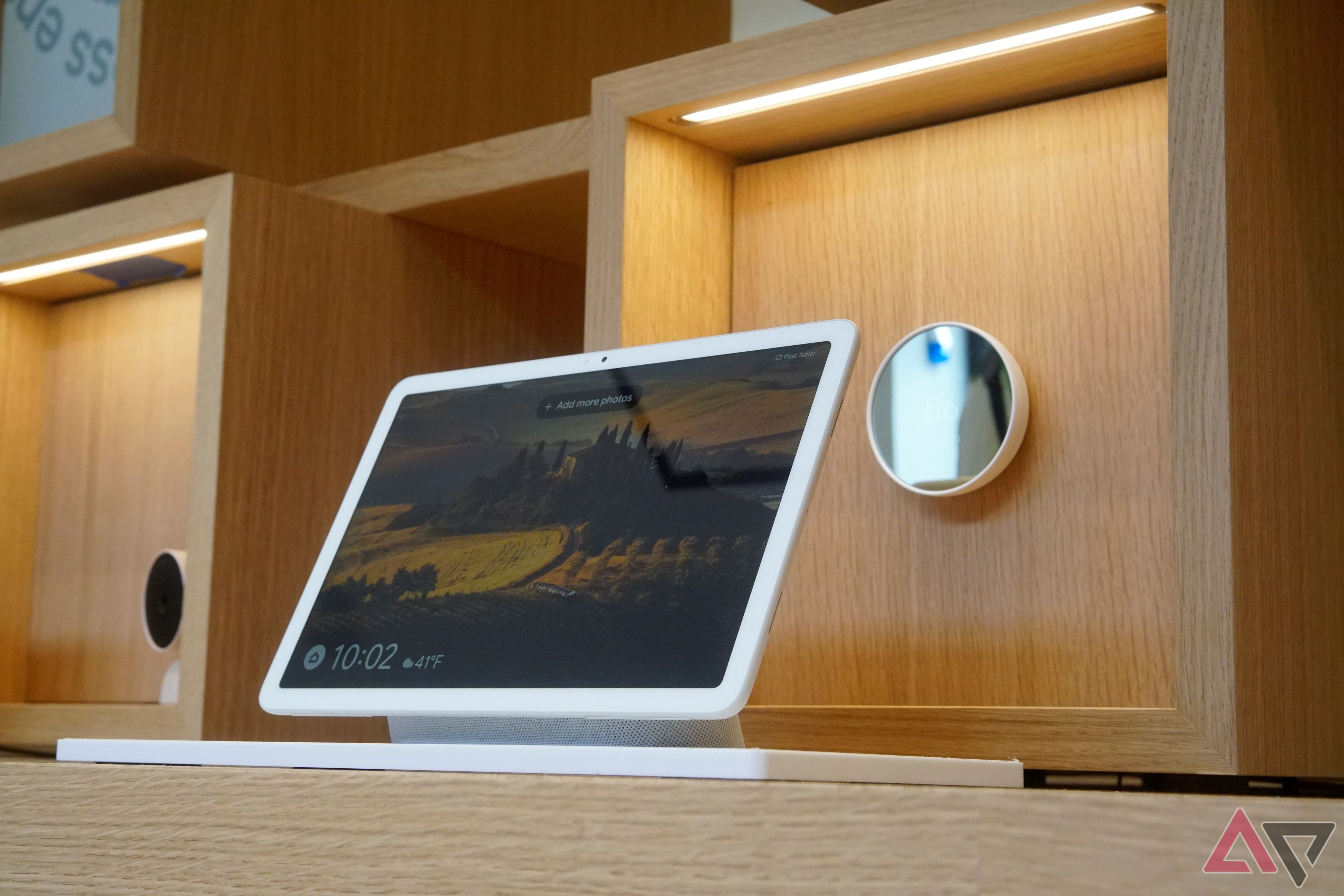Key Takeaways
- Leaked documents suggest Google will launch a Tensor G6-powered Pixel Tablet in 2027.
- The new Pixel Tablet may feature a second USB-C port with DisplayPort output for driving external displays.
- Google’s 2027 tablet will apparently also feature pogo pins for the magnetic speaker dock.
Despite faltering in some areas, the Pixel Tablet is a great first effort from Google. The tablet stands out for its magnetic speaker dock, transforming it into a smart home hub. Since launch, Google has also released several Android updates to enhance the Pixel Tablet’s user experience. One such change under development is a desktop windowing mode, which would pair nicely with the rumored keyboard accessory. Now, a new leak sheds more light on the 2027 Pixel Tablet and how it could take advantage of these features with a second USB-C port.
Related
Your Pixel Tablet just stole one of the Apple HomePod’s best tricks
‘Hold close to cast’ is rolling out now
Based on some leaked documents from Google’s gChips division, an Android Authority report claims Google will launch a Tensor G6-powered Pixel Tablet in 2027. This should presumably be the Pixel Tablet 3, with Google’s second-gen tablet possibly launching in 2025. The Tensor G6 chip will debut on the 2026 Pixel phone lineup and then make its way to a mid-range Pixel phone and Pixel tablet the following year.
The document suggests that the Tensor G6 chip will sport a second “tablet only use case” USB-C controller compliant with the USB 3.2 standard. It will support DisplayPort output, allowing it to drive an external display. This can be further extended to two displays with daisy-chaining. The second USB-C port is reportedly placed on the opposite side of the controller for easier signal routing.
Besides the second USB-C port, Google will retain the USB 2.0-powered pogo pins used by the speaker dock on the 2027 Pixel Tablet. This indicates that Google is not planning to give up on the Pixel Tablet’s charging speaker dock.
2027 Pixel Tablet could focus on productivity
A second USB-C port with DisplayPort output will help turn the Pixel Tablet 3 into a portable workhorse. This functionality should also go well with Android’s new desktop mode, which is currently under development, and provide a bigger canvas for running Android apps.
The iPad can drive an external display through its primary USB-C port, with the Smart Connector allowing the device to connect to its useful Magic Keyboard accessory. So, it appears Google wants to deliver a similar experience with the Pixel Tablet 3. However, the device is still a few years away from launch and in the early stages of development, so much could change before it’s ready for release.

